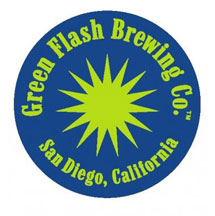A Question of Scale

Nevertheless, Green Flash founder and CEO Mike Hinkley explained why he isn’t letting the sizable financial investment limit what he sees as a potential growth opportunity. Hinkley’s vision is to produce smaller, 50-barrel batches of his brew on both coasts, which he says leaves the door open for continued innovation while at the same time allowing his company to deliver fresher beer, faster.
“We sell about 40 percent of our beer on the East Coast,” he said. “The idea of being able to deliver beer in two days in between Miami and Boston is very attractive to us.”
Attractive as it may seem, right now many industry observers will be watching Green Flash and letting it serve as a test case in bi-coastal manufacturing for smaller brewers. It’s a model that Jordan says her company toyed with in the past, even at one point considering a network of smaller breweries scattered across the U.S., before eventually deciding the model was too expensive and risky.
“Efficiency is one thing I worry about for smaller breweries,” she said. “If you are building 150,000 barrels of capacity, that is not nearly as financially efficient as 750,000 barrels of capacity.”
J.B. Shireman, vice president of First Beverage Group — who is also the former head of distribution strategy for New Belgium — said that while he wasn’t aware of any current breweries the size of Green Flash with bi-coastal locations, that doesn’t mean it can’t be done, especially if it cuts shipping costs enough.
“If you have aspirations to be a brand with a national footprint and you happen to be founded on one of the coasts, you are going to have the freight costs stacked against you,” he said.
And Hinkley’s brand definitely travels. Only 15 percent of production actually stays in the San Diego market, and the company currently distributes in 38 states. That’s even more than the 30 states that New Belgium is in, although the Fat Tire maker has been notoriously deliberate in expanding its distribution footprint over its 20-year history. Still, New Belgium does have 30 times the production of Green Flash, meaning that it has broader aims than Green Flash.
“We are not as regional as most breweries,” Hinkley said. “We go to market in a specific way, and it’s not our goal to be in every gas station.” CONT’D…
